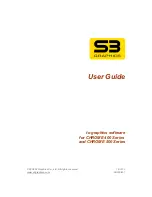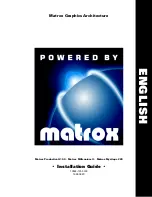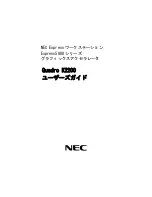
OPERATION
Each node is responsible for receiving foreign messages, writing them to its copy of
shared memory, and re-transmitting the message to the next node.
4.2.14.2 Receive FIFO
The Receive FIFO is designed as a temporary holding place for incoming foreign
messages while the shared memory is busy servicing a host request. This FIFO is
designed so it can never be overrun.
4.2.15 Network Status Messaging
The network logic in each node deploys a timer in the transmission logic that identifies
when a local network status-messaging interval has expired. This interval of
approximately 1µs is chosen based on maximum media transmission delays, fidelity of
status updates, and impacts to network throughput. When the status message interval
expires, the node generates a network status message automatically (with no software
overhead).
Priority for transmitted traffic is first given to retransmitted traffic (from the insertion
buffer), then to network status messages, and finally to locally generated traffic (from the
transmit buffer). When the network status message is generated, it includes the local node
ID and applicable status/control information (local age determined by the local receive
logic, information regarding the local node such as RX_EN, TX_EN, RT_EN, link up,
signal detects and enables for applicable link interfaces, etc.).
4.2.15.1 Shared Information
•
Node ID
•
Upstream Node ID
•
Laser Enable (one per link)
•
Link Select
•
Redundant Link Capable
•
Transmit Enable
•
Receive Enable
•
Retransmit Enable
•
Write Me Last
•
Link Up
•
Laser Signal Detect (one per link)
4.2.16 Interrupts
Broadcast and unicast network interrupts are available for user-level signaling and
synchronization between nodes. These interrupts are initiated by the sender and are
optionally received by the other nodes. A 32-bit user-defined vector identifies conditions
associated with this notification event. These network interrupts propagate from host to
host through the network medium.
The receiving nodes can individually enable up to 32 general-purpose broadcast network
interrupts. The sender at origination specifies the user-defined interrupt number and
vector. These broadcast network interrupts are named HBI (Host Broadcast Interrupt)
events.
Copyright 2005
4-5
GT200
Hardware Reference
Up to 256 (per node) general-purpose unicast network interrupts can be used for point-to-
point signaling between nodes. While each node can enable reception of the unicast
interrupts, reception cannot be restricted to interrupts from particular source node IDs
Rather, enabling unicast interrupts allows an interrupt on reception of a unicast network
Содержание GT200
Страница 1: ...GT200 Hardware Reference for PCI and PMC Cards Document No G T MR G1PCPMCP A 0 A4 ...
Страница 2: ......
Страница 8: ...TABLE OF CONTENTS This page intentionally left blank Copyright 2005 iv GT200 Hardware Reference ...
Страница 12: ......
Страница 40: ......
Страница 49: ...B B COUNTER TIMER DEFINITIONS APPENDIX B COUNTER TIMER DEFINITIONS ...
Страница 50: ......
Страница 53: ...1 GLOSSARY GLOSSARY ...
Страница 54: ......
Страница 58: ...GLOSSARY This page intentionally left blank Copyright 2005 GLOSSARY 4 GT200 Hardware Reference ...
Страница 59: ...INDEX ...
Страница 60: ......
















































